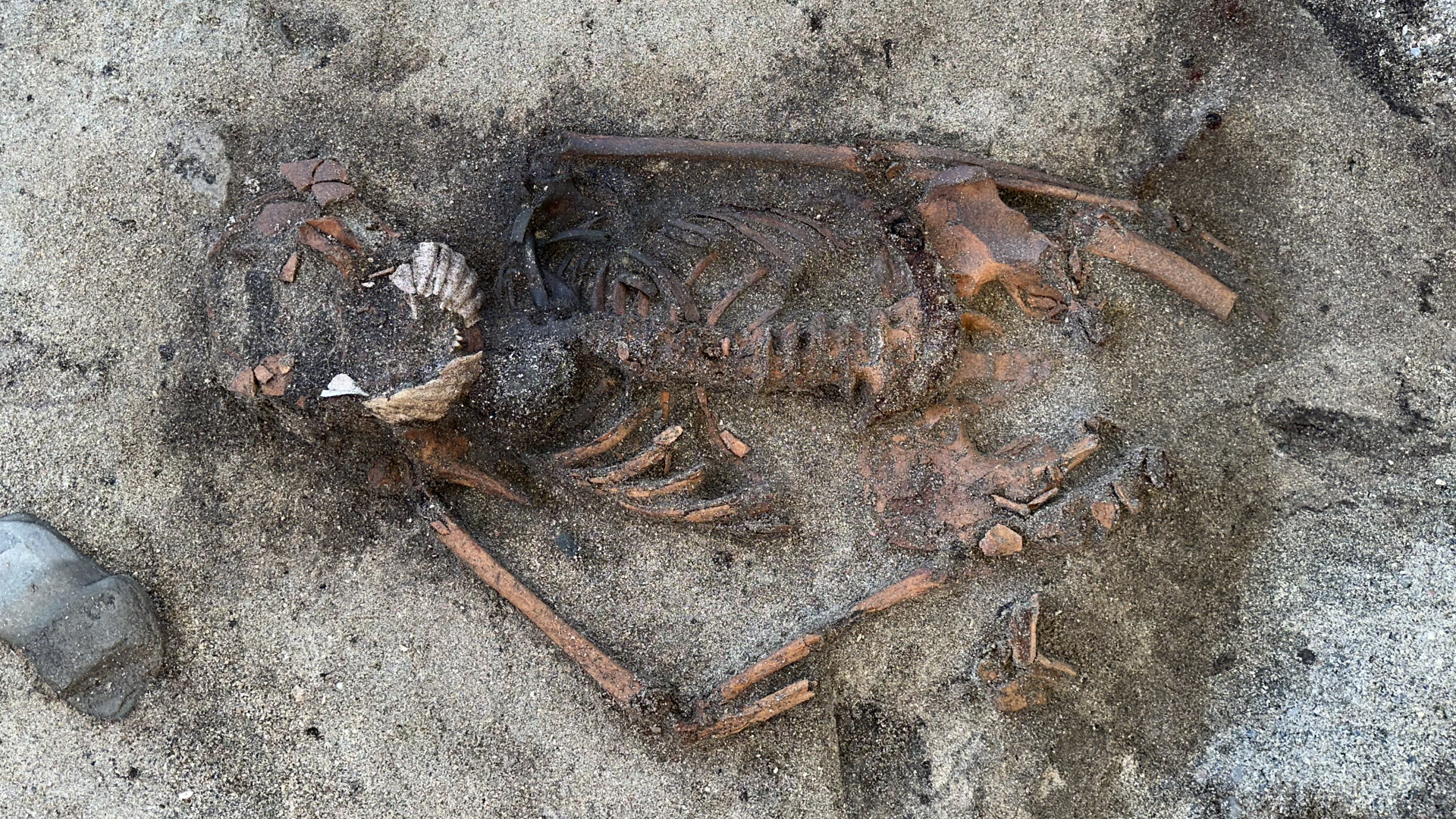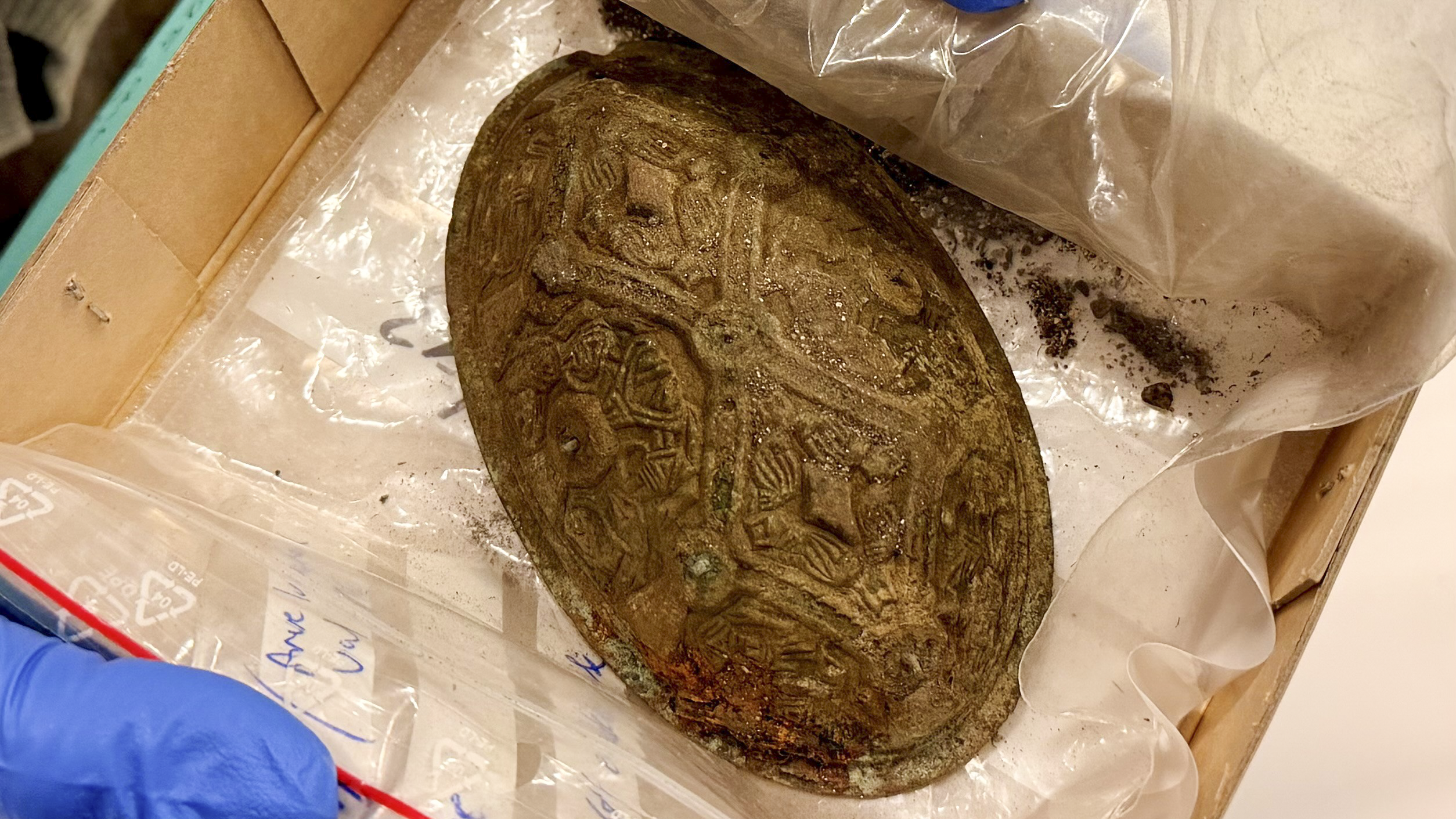Viking Age woman found buried with scallop shells on her mouth, and archaeologists are mystified
A ninth-century grave discovered in Norway held the remains of a Viking Age woman whose mouth was covered with two large scallop shells.

A metal detectorist in central Norway recently discovered a Viking Age metal brooch. But when he led archaeologists to the site, they found much more: a burial with evidence of an unusual ritual they had never seen before.
"The grave contains what we believe is a woman, buried with a typical Viking Age outfit and jewelry dating to the ninth century," Raymond Sauvage, head engineer at the Norwegian University of Science and Technology's University Museum and the project leader, said in a translated statement. "The most striking feature is two scallop shells placed by the mouth of the deceased, a practice previously unknown from pre-Christian graves in Norway."
The burial was discovered earlier this year when the detectorist, Roy Søreng, was searching a coastal field privately owned by Arve Innstrand in the county of Trøndelag. Søreng hit on a metal, oval-shaped brooch typical of Viking Age jewelry. Innstrand and Søreng alerted archaeologists, who excavated further and found a grave filled with artifacts, bird bones and the shell-covered human skeleton.
"It is very unusual to have such a well-preserved skeleton in old graves," Hanna Geiran, director general for the Norwegian Directorate for Cultural Heritage, said in the statement. "This discovery has great cultural heritage value."
The Viking Age woman appeared to have been buried in an outer dress that was fastened near her shoulders with two oval brooches, according to the archaeologists. A small ring brooch closed the neck opening of her inner dress, which was similar to a slip. The woman's jewelry and clothing suggest "she was a free and likely married woman, perhaps the mistress of the farm," Sauvage said.

Although the brooches are typical Viking Age clothing accessories, the shells and bird bones surprised the archaeologists.
Two large scallop shells were positioned on the woman's mouth, with the curved side outward and the straight edge upward, partially covering her jaw. It is unclear if the scallops were part of an artifact, Sauvage told Live Science in an email, as "we have not seen markings such as holes yet." Further analysis may reveal additional clues.
Get the world’s most fascinating discoveries delivered straight to your inbox.
Great Atlantic scallops are common in the northeastern Atlantic Ocean in places like Trøndelag. Sauvage told Live Science that the scallops are probably local in origin. "These parts of Norway are excellent grounds for collecting scallops," he said. "However, you need to dive to catch them; thus, it is uncertain if they were caught via free-diving or if they are dead shells gathered at the beach."
The symbolic meaning of the scallop shells and the bird bones in the burial is currently unknown.

Scallop patterns found on a fourth-century Roman coffin were hypothesized to represent life after death, while in the Middle Ages, which followed the Viking Age, scallop shells were linked to the Christian cult of St. James as a symbol of pilgrimage.
"It is likely that the scallop shells had a symbolic meaning intended to be communicated to those witnessing the burial; unfortunately it is difficult to guess what this meaning could have been," Sauvage said.
Earlier this year, archaeologists found a second skeleton in the same field, but it likely dates to the eighth century, several generations before the woman was buried with scallops. More work is needed to figure out who these people were and why they were buried close together.
"We will examine the skeleton, conserve the objects, and take samples for dating and DNA analysis," Sauvage said in the statement. "The goal is to learn more about the person and, if possible, any kinship with the earlier find from the same site."
Viking quiz: How much do you know about these seaborne raiders, traders and explorers?

Kristina Killgrove is a staff writer at Live Science with a focus on archaeology and paleoanthropology news. Her articles have also appeared in venues such as Forbes, Smithsonian, and Mental Floss. Kristina holds a Ph.D. in biological anthropology and an M.A. in classical archaeology from the University of North Carolina, as well as a B.A. in Latin from the University of Virginia, and she was formerly a university professor and researcher. She has received awards from the Society for American Archaeology and the American Anthropological Association for her science writing.
You must confirm your public display name before commenting
Please logout and then login again, you will then be prompted to enter your display name.
